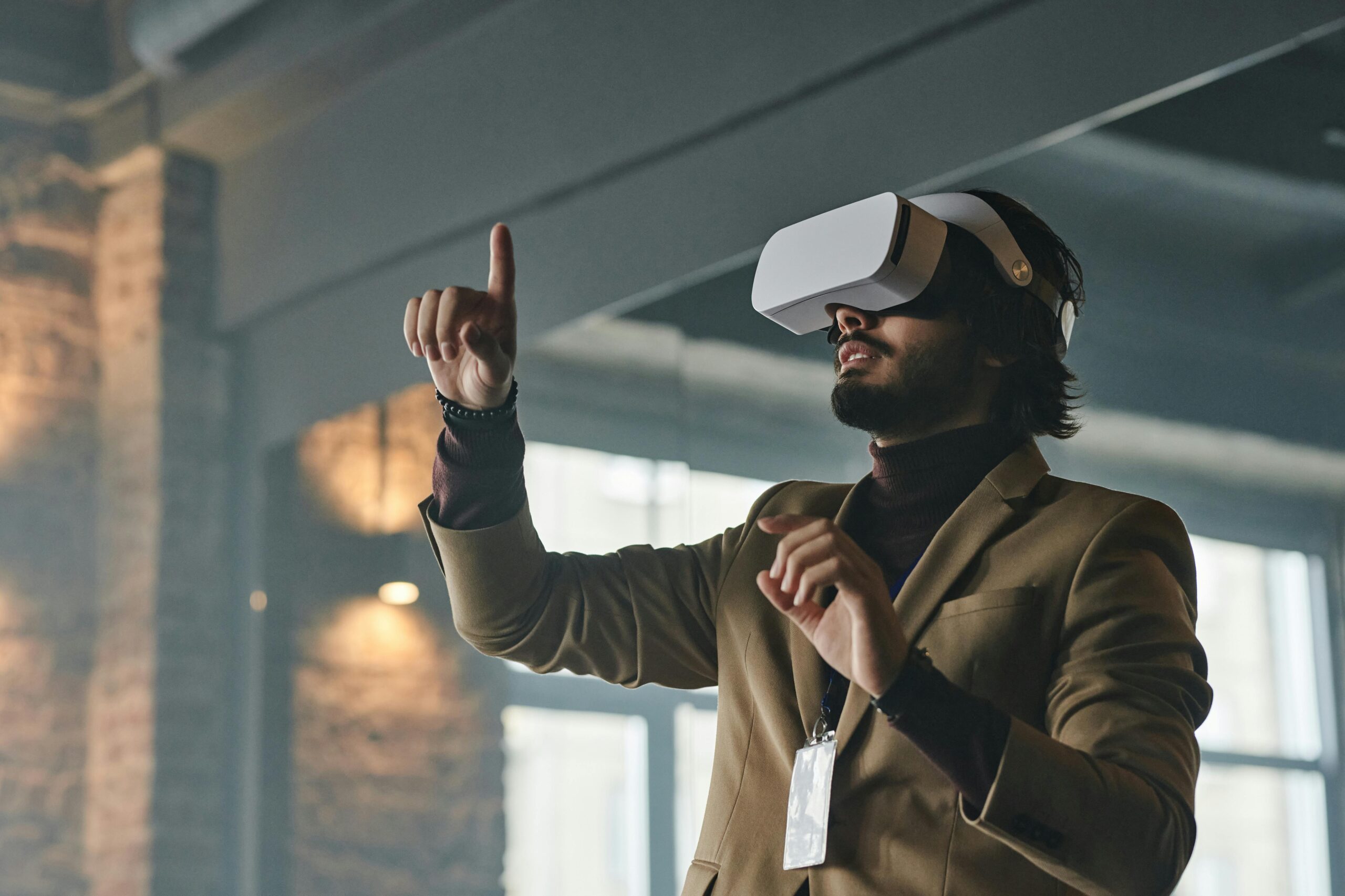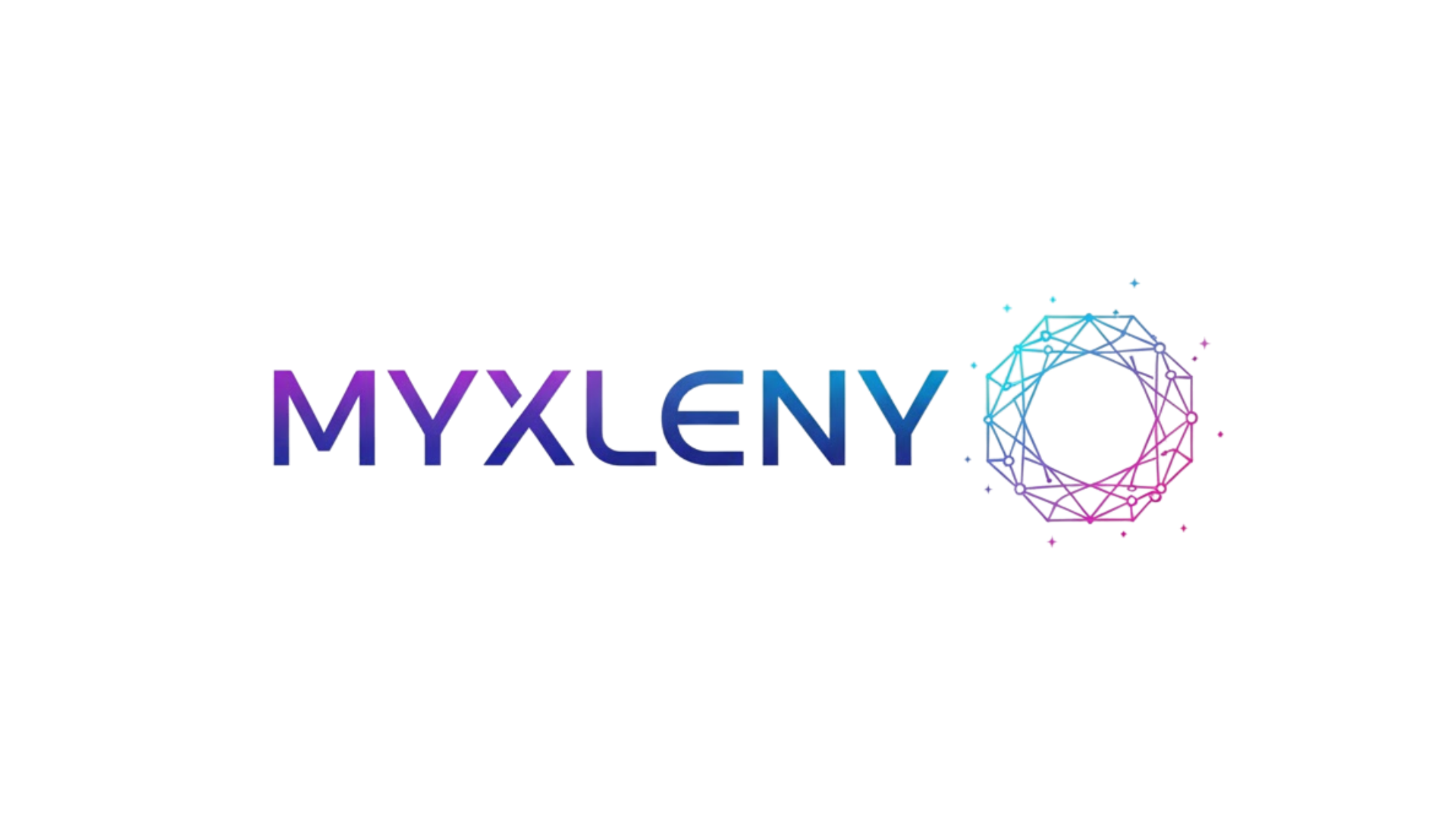Virtual reality is no longer science fiction—it’s transforming how we work, collaborate, and innovate. The modern workspace is evolving rapidly, and VR technology stands at the forefront of this revolution.
The traditional office environment has undergone dramatic changes over recent years, accelerated by global events and technological breakthroughs. As businesses seek innovative solutions to enhance productivity, foster creativity, and maintain competitive advantages, virtual reality emerges as a game-changing tool that’s reshaping our understanding of what a workspace can be. From remote collaboration to immersive training programs, VR technology offers unprecedented opportunities to revolutionize how we approach our daily professional activities.
🚀 The Current State of Virtual Reality in Professional Settings
Virtual reality technology has matured significantly over the past decade. What once required room-sized equipment and astronomical budgets now fits comfortably on your head with consumer-friendly price tags. Modern VR headsets deliver stunning visual fidelity, intuitive controls, and seamless integration with existing business tools and platforms.
Major technology companies have invested billions in developing VR ecosystems specifically designed for enterprise applications. These platforms enable professionals to meet in virtual conference rooms, manipulate 3D models in real-time, conduct training simulations, and collaborate on projects regardless of physical location. The infrastructure supporting workplace VR has reached a tipping point where adoption makes practical and financial sense for businesses of all sizes.
Statistics reveal an impressive growth trajectory. The global VR market for enterprise applications is projected to reach unprecedented valuations, with workplace productivity tools representing one of the fastest-growing segments. Companies implementing VR solutions report measurable improvements in employee engagement, training effectiveness, and operational efficiency.
💼 Transforming Collaboration Through Immersive Virtual Meetings
Traditional video conferencing has become ubiquitous, yet it still lacks the natural presence and spatial awareness of in-person interactions. Virtual reality addresses these limitations by creating shared three-dimensional spaces where colleagues can interact with realistic body language, spatial audio, and environmental context.
In VR meetings, participants appear as avatars in customizable virtual rooms. These spaces can range from photorealistic boardrooms to creative environments impossible in the physical world—imagine brainstorming while floating among the stars or reviewing architectural plans inside the building itself at full scale.
The technology captures subtle non-verbal communication cues often lost in flat video calls. Hand gestures, head movements, and spatial positioning all contribute to more natural and effective communication. Participants can gather around virtual whiteboards, manipulate shared 3D objects, and experience a genuine sense of presence that significantly enhances collaboration quality.
Key Advantages of VR Collaboration Spaces
- Enhanced sense of presence and engagement compared to traditional video calls
- Spatial audio that allows natural side conversations and group dynamics
- Ability to share and manipulate 3D content collaboratively in real-time
- Customizable environments tailored to specific meeting purposes and team preferences
- Reduced meeting fatigue through more natural interaction patterns
- Global accessibility without physical travel requirements or environmental impact
🎓 Revolutionary Training and Skill Development Programs
Perhaps nowhere does VR demonstrate more immediate value than in training and education. Immersive simulations provide risk-free environments for practicing complex procedures, dangerous tasks, and high-stakes scenarios. Industries from healthcare to manufacturing have embraced VR training with remarkable results.
Medical professionals can practice surgical procedures on virtual patients, making mistakes and learning without real-world consequences. Manufacturing workers can familiarize themselves with expensive machinery before touching actual equipment. Customer service representatives can navigate difficult client interactions in safe, controlled scenarios that build confidence and competence.
Research consistently shows that VR training produces better retention rates compared to traditional methods. The experiential nature of learning-by-doing in immersive environments creates stronger neural pathways and more durable skill acquisition. Trainees report higher engagement levels and reduced training time while achieving superior performance outcomes.
Cost efficiencies also make compelling business cases. While initial VR setup requires investment, the long-term savings from reduced travel, equipment usage, and instructor time create positive returns. Training can occur on-demand, scaled infinitely, and repeated as necessary without incremental costs per session.
🏗️ Design, Architecture, and Spatial Planning Revolution
For professionals working with three-dimensional spaces and objects, VR represents nothing short of revolutionary. Architects can walk clients through buildings before construction begins, making real-time modifications based on feedback. Interior designers can experiment with furniture arrangements, lighting schemes, and material selections in photorealistic virtual environments.
Product designers manipulate digital prototypes at full scale, examining details from every angle and testing functionality before manufacturing expensive physical samples. Engineering teams collaborate on complex assemblies, identifying interference issues and optimization opportunities that would be difficult to spot in traditional CAD software.
The ability to experience designs spatially—to stand inside them, move through them, and interact with them—provides insights impossible to achieve through drawings or flat screens. Stakeholders without technical training can provide meaningful input when experiencing spaces virtually, democratizing the design process and improving final outcomes.
📊 Data Visualization and Analytics in Three Dimensions
Complex datasets become comprehensible when visualized in three dimensions with interactive VR interfaces. Financial analysts can walk through data landscapes where different metrics form terrain features, making patterns and anomalies immediately apparent. Scientists explore molecular structures, astronomical data, and simulation results with unprecedented intuitive understanding.
The spatial memory advantages of VR enable users to navigate large information spaces more effectively than traditional interfaces allow. You might examine quarterly sales figures represented as a virtual city where building heights indicate revenue, colors show profitability, and geographical arrangement reflects actual market locations. This spatial organization leverages innate human navigation abilities for information processing.
Interactive manipulation of data in VR environments enables hypothesis testing and exploration in real-time. Researchers can adjust variables and immediately observe results, fostering deeper understanding and accelerating discovery processes across scientific and business applications.
🌐 Remote Work Enhanced: Beyond Traditional Telecommuting
Remote work has become standard practice for millions of professionals, but it often lacks the spontaneous interaction and camaraderie of physical offices. VR workspaces bridge this gap by creating persistent virtual offices where distributed teams can gather, collaborate, and maintain company culture despite geographical separation.
These virtual offices can include communal areas for casual interactions, private spaces for focused work, and specialized rooms for different activities. Employees can customize their personal virtual workspaces while maintaining connection to colleagues through shared environments. The psychological benefits of “going to work” in VR—even from home—help many people establish healthier work-life boundaries.
Companies report that VR offices reduce feelings of isolation among remote workers while providing flexibility advantages that physical offices cannot match. Teams can seamlessly include members across time zones, expand or contract spaces based on project needs, and create specialized environments without real estate constraints.
⚙️ Practical Considerations for Workplace VR Implementation
Successfully integrating VR technology into your workspace requires thoughtful planning and consideration of several factors. Hardware selection represents the first major decision, with options ranging from standalone headsets to PC-tethered systems offering different balances of portability, power, and price.
Network infrastructure must support the data demands of VR applications, particularly for multi-user collaborative experiences. IT departments should assess bandwidth requirements, latency sensitivity, and security protocols specific to VR platforms before large-scale deployment.
Essential Implementation Steps
- Conduct pilot programs with small teams before organization-wide rollout
- Provide comprehensive training on both hardware use and VR-specific best practices
- Establish usage guidelines addressing comfort, safety, and appropriate session lengths
- Integrate VR tools with existing workflow systems and communication platforms
- Gather feedback regularly and iterate on implementation strategies
- Budget for ongoing maintenance, software updates, and hardware refresh cycles
User comfort and health considerations are paramount. While modern VR technology has significantly reduced motion sickness issues, individual sensitivities vary. Organizations should educate users about proper headset adjustment, recognize symptoms of discomfort, and encourage regular breaks during extended VR sessions.
💡 Industry-Specific Applications Driving Adoption
Different industries are leveraging VR workspace technology in specialized ways tailored to their unique needs. Healthcare facilities use VR for surgical planning, allowing surgeons to examine patient-specific anatomical models derived from medical imaging before entering operating rooms. This preparation improves surgical precision and reduces complications.
Real estate professionals conduct virtual property tours, enabling potential buyers to explore homes across the country without travel. Automotive designers review vehicle interiors at full scale, testing ergonomics and aesthetics before manufacturing expensive prototypes. Retail brands create virtual showrooms where customers can experience products in context regardless of physical inventory constraints.
Education institutions have embraced VR for everything from virtual field trips to laboratory simulations, providing experiential learning opportunities previously limited by budget and logistics. Military and defense applications include tactical training, equipment familiarization, and mission planning in realistic simulated environments.
🔮 The Horizon: Emerging Trends and Future Developments
Virtual reality workspace technology continues evolving rapidly. Next-generation headsets promise higher resolutions, wider fields of view, and improved comfort for extended wear. Eye-tracking technology enables foveated rendering for better performance and unlocks new interaction paradigms through gaze-based controls.
Haptic feedback systems are becoming more sophisticated, allowing users to feel virtual objects and textures. This tactile dimension adds realism to training simulations and enables new categories of work that require physical sensation feedback. Full-body tracking systems capture nuanced movements, creating more natural avatar representations and enabling applications like virtual fitness and physical therapy.
The convergence of VR with artificial intelligence opens fascinating possibilities. AI assistants could inhabit virtual workspaces, providing contextual support and automating routine tasks. Machine learning algorithms might analyze work patterns in VR environments, suggesting productivity optimizations and workspace configurations tailored to individual preferences.
Interoperability standards are emerging that allow seamless movement between different VR platforms and applications. This reduces vendor lock-in concerns and creates ecosystems where specialists can select best-in-class tools while maintaining workflow continuity.
🎯 Measuring ROI and Success Metrics
Quantifying the value of VR workspace investments requires establishing clear metrics aligned with organizational objectives. Training programs can measure improvements in skill acquisition speed, retention rates, and performance outcomes compared to traditional methods. Time-to-competency for new employees often decreases significantly with VR onboarding programs.
Collaboration effectiveness can be assessed through project completion rates, decision-making speed, and participant satisfaction surveys. Travel cost reductions provide straightforward financial metrics when VR meetings replace physical gatherings. Design iteration cycles typically accelerate when stakeholders can review and approve work in immersive environments rather than through drawings and models.
Employee engagement and retention metrics often improve following VR implementation, particularly among distributed teams. The novelty factor contributes initially, but sustained benefits come from genuinely enhanced work experiences and capabilities that VR enables.
🛡️ Addressing Security and Privacy Concerns
As with any enterprise technology, security considerations are paramount when implementing VR workspaces. Virtual environments can contain sensitive business information, intellectual property, and confidential communications requiring robust protection. Organizations should ensure VR platforms employ end-to-end encryption, secure authentication protocols, and comprehensive access controls.
Privacy concerns extend to biometric data collected by VR systems. Eye-tracking, movement patterns, and interaction behaviors can reveal personal information requiring careful handling under privacy regulations. Clear policies should govern data collection, storage, and usage, with transparency about what information is captured and how it’s utilized.
Regular security audits of VR systems, prompt software updates, and employee training on security best practices form essential components of a comprehensive protection strategy. As VR adoption grows, it becomes an increasingly attractive target for cyber threats requiring vigilant defense.

🌟 Making the Leap: Starting Your VR Workspace Journey
For organizations ready to explore VR workspace technology, starting small and scaling strategically produces the best outcomes. Identify specific use cases where VR offers clear advantages over existing solutions—perhaps a recurring training need, a distributed team struggling with collaboration, or a design process hampered by communication gaps.
Begin with a focused pilot program involving enthusiastic early adopters willing to provide candid feedback. This approach limits initial investment while generating valuable insights about what works in your specific organizational context. Success stories from pilot programs build internal momentum and justify expanded implementation.
Partner with experienced vendors who understand enterprise needs and provide adequate support during adoption phases. The VR landscape includes numerous options at various price points and capability levels. Thorough evaluation ensures selecting solutions aligned with your requirements, technical infrastructure, and growth plans.
Remember that technology adoption is as much about culture and change management as it is about hardware and software. Communicate clearly about why VR is being introduced, what benefits it offers, and how it complements rather than replaces existing work methods. Address concerns transparently and involve employees in shaping how VR integrates into workflows.
The future of work is being written today, and virtual reality technology represents one of its most exciting chapters. Organizations that embrace these tools thoughtfully position themselves at the forefront of workplace innovation, attracting talent, improving outcomes, and building competitive advantages for the decade ahead. The question is no longer whether VR will transform professional environments—it’s whether your organization will lead or follow this transformation. The workspace revolution is here, immersive and full of potential. Will you step into the future? 🚀
Toni Santos is a future-of-work researcher and social innovation writer exploring how technology, culture, and global mobility are redefining what it means to work and thrive in the 21st century. Through his studies on automation, digital nomadism, and workforce transformation, Toni examines the balance between progress, adaptability, and human purpose in a rapidly changing world. Passionate about remote collaboration systems and digital inclusion, Toni focuses on how emerging tools and global connectivity empower individuals to build meaningful, flexible, and resilient careers. His work highlights how automation and new work models can coexist with creativity, empathy, and social value. Blending sociology, economics, and digital strategy, Toni writes about the human side of innovation — helping readers understand not only where work is heading, but how to align with its transformation responsibly and purposefully. His work is a tribute to: The evolving relationship between automation and human employment The rise of global, location-independent lifestyles The power of resilience and adaptability in the modern workforce Whether you are a freelancer, remote leader, or curious observer of the new economy, Toni Santos invites you to explore the future of work — one idea, one connection, one transformation at a time.




